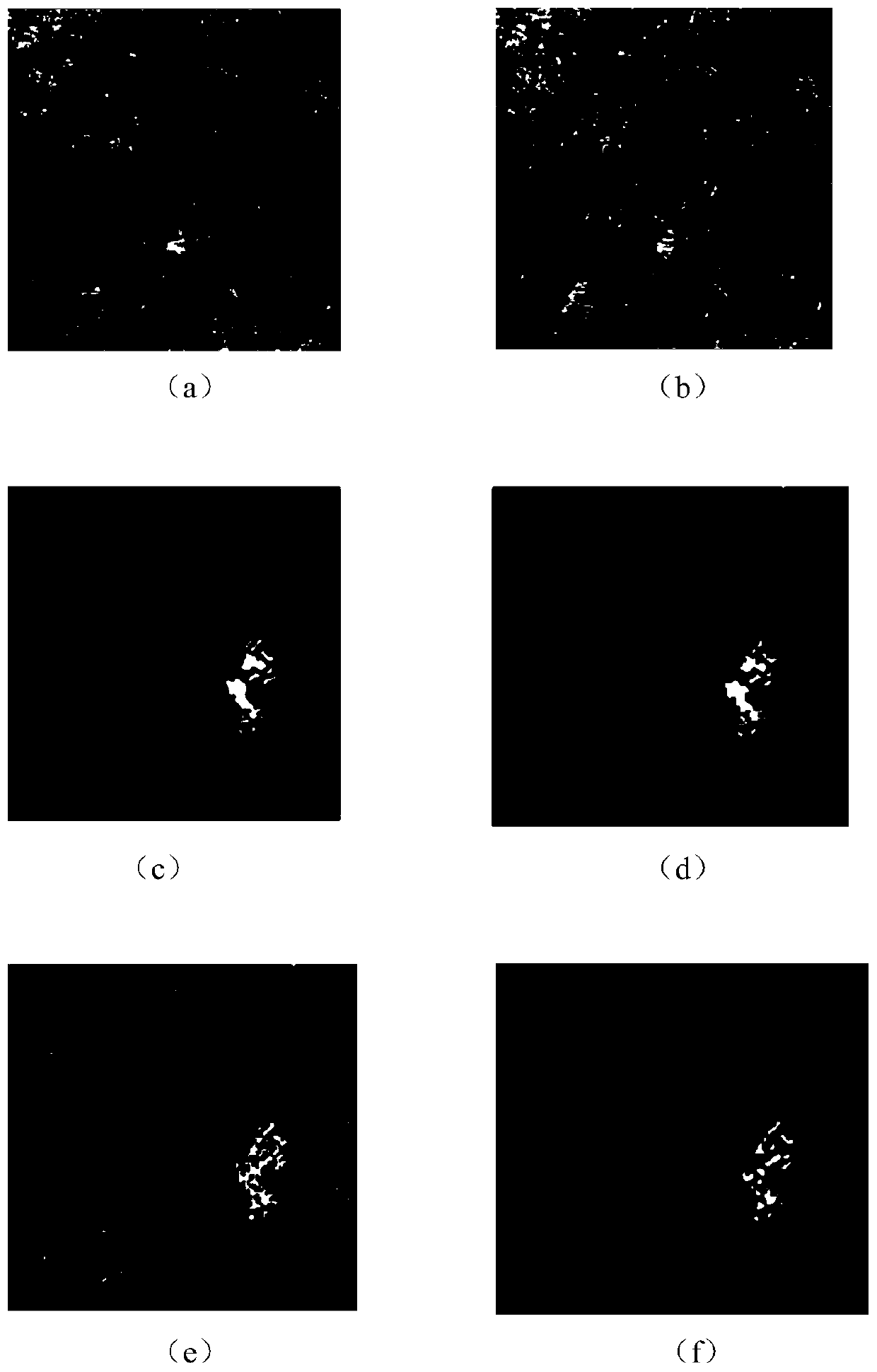Algorithm for detection of changing regions in sar images based on neighborhood ratio and self-paced learning
A technology of region detection and image change, applied in the field of image processing, can solve the problems of increasing the false detection rate of late change detection, loss of texture information, containing artificial parameters, etc., and achieve the effect of improving self-learning ability, accuracy and precision.
- Summary
- Abstract
- Description
- Claims
- Application Information
AI Technical Summary
Problems solved by technology
Method used
Image
Examples
Embodiment Construction
[0038] The present invention will be further described below in conjunction with the accompanying drawings.
[0039] refer to figure 1 , the concrete realization steps of the present invention are as follows:
[0040] Step 1, read in the synthetic aperture radar SAR image.
[0041] Read in two registered and corrected Synthetic Aperture Radar SAR images in different phases of the same area I 1 and I 2 .
[0042] Step 2, normalization.
[0043] Using the following equation, for the synthetic aperture radar SAR image I 1 and I2 The normalization process is carried out respectively, and the normalized synthetic aperture radar SAR image I is obtained. 1 ' and I 2 ':
[0044]
[0045]
[0046] Among them, I 1 ' denotes the synthetic aperture radar SAR image I 1 Normalized synthetic aperture radar SAR image, min represents the operation of taking the minimum value, max represents the operation of taking the maximum value, I 2 ' denotes the synthetic aperture radar S...
PUM
 Login to View More
Login to View More Abstract
Description
Claims
Application Information
 Login to View More
Login to View More - R&D
- Intellectual Property
- Life Sciences
- Materials
- Tech Scout
- Unparalleled Data Quality
- Higher Quality Content
- 60% Fewer Hallucinations
Browse by: Latest US Patents, China's latest patents, Technical Efficacy Thesaurus, Application Domain, Technology Topic, Popular Technical Reports.
© 2025 PatSnap. All rights reserved.Legal|Privacy policy|Modern Slavery Act Transparency Statement|Sitemap|About US| Contact US: help@patsnap.com



